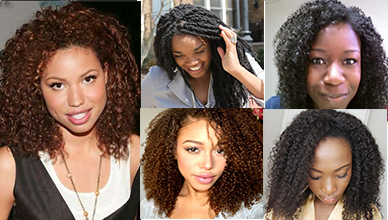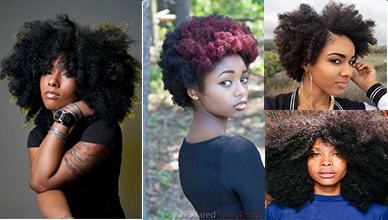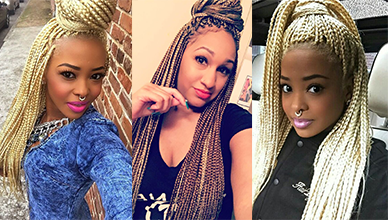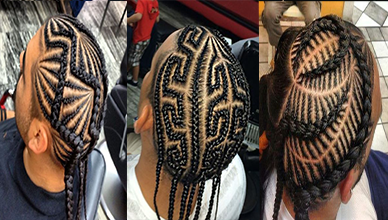#Attractive 8 Feed in Ponytail for Woman,,,
very much popular natural braiding sryle For Black Woman.This one is the longer version of the ponytail with feed-in braids.

Deep black ponytail hair with few feeds. Hair length is long and feeds depth is also very high. Feed under the feed is noticeable.

This blonde style strikes with long hair and filled with dashing brown color hair. Not so much feed, but hair tied with hair in upward scale.

African origins,,,
Since the beginning of African civilizations, hairstyles have been used to convey messages to greater society. As early as the 15th century, different styles could "indicate a person's marital status, age, religion, ethnic identity, wealth and rank within the community."[1]
Hair maintenance in traditional Africa was aimed at creating a sense of beauty. "A woman with long thick hair demonstrated the life force, the multiplying power of profusion, prosperity...a green thumb for raising bountiful farms and many healthy children", wrote Sylvia Ardyn Boone, an anthropologist specializing in the Mende culture of Sierra Leone.[2]
In Yoruba culture in West Africa, people braided their hair to send messages to the gods. The hair is the most elevated part of the body and was therefore considered a portal for spirits to pass through to the soul. Because of the cultural and spiritual importance of hair for Africans, the practice of having their heads involuntarily shaved before being sold as slaves was in itself a dehumanizing act. "The shaved head was the first step the Europeans took to erase the slaves’ culture and alter the relationship between the African and his or her hair.!

Contemporary
A man with cornrows
Hip Hop culture in the 1980s created a slew of new trends, one being the "fade" for men. The fade is a hairstyle worn predominantly by black men in which the hair starts off short at the bottom and lengthens as it reaches the top. This style afforded the wearer an opportunity for individuality, as people often cut designs into the back and sides or added different colors to the top [2]
Hip Hop also had an influence on young black women, who now could look to the popular musical artists on TV and album covers for inspiration. Asymmetric cuts like wedges, stacks or finger curls were popular during this time. Interestingly, all of these styles required some form of hair straightening. After the 1970s, men and women tended to turn away from the all-natural looks and began creating their own variety of individualized looks.[2]
Hair styling in African American culture is greatly varied. African American hair is typically composed of tightly coiled curls. The predominant styles for women involve the straightening of the hair through the application of heat or chemical processes.[6] In many cases today, the overuse of heat and chemicals has left some African American women with fairly short and damaged hair.[7] These treatments form the base for the most commonly socially acceptable hairstyles in the United States. Alternatively, the predominant and most socially acceptable practice for men is to leave one's hair natural.[8]
Often, as men age and begin to lose their hair, the hair is either closely cropped, or the head is shaved completely free of hair. However, since the 1960s, natural hairstyles, such as the afro, cornrows, and dreadlocks, have been growing in popularity. Despite their association with civil rights oriented political movements, the styles have attained considerable, but certainly limited, social acceptance.[9] In fact, seventy to eighty percent the customers at Ajes Salon in Chicago go natural, most commonly in the broad set or strong set styles. This harkens back to the Afros seen in Chicago in 1960s, except that "it is more tame than if it were naturally big and curly," said Tena Warren, an employee at the salon.
African-American women may learn to adapt to Caucasian standards of beauty, which includes straight hair. Many African-American women have chemically processed or heat processed their hair to straighten it.[10] History shows that mainstream society has usually viewed natural black hair as a problem in need of fixing. Because of this, hair weaves and heat and chemical products are the social norms of black women. Caucasian society often expects African-American women to have similar styles to as the Caucasian majority's straight hair, implicitly expecting all hair textures to be uniform.
Women.png](https://images.hive.blog/768x0/https://steemitimages.com/DQmUhsjuNbEcU6eBHVRFaxAZULLMrnn6pua8QywCjFcaqco/Latest%20Curly%20Hairstyles%20for%20African%20American%20Women.png)
Hi! I am a robot. I just upvoted you! I found similar content that readers might be interested in:
https://en.wikipedia.org/wiki/African-American_hair